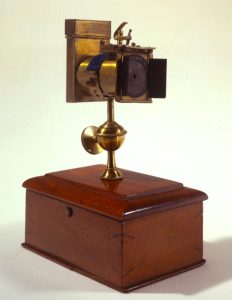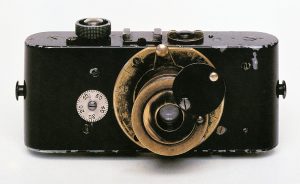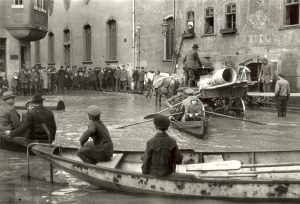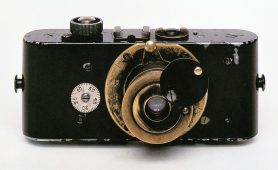If you’re a frequent reader of this site, I have to imagine that you likely have a passing interest in the history of the stories behind the cameras I write about, after all, it is usually a major part of most posts here.

I’ve always been fascinated with history. In high school, US History and Western Civilization were two of my favorite classes. I’ve always loved old things, antique shops, museums, etc, so when I saw this two part article from the June and July 1953 issues of Modern Photography, I figured it was right up my alley. This also being the 20th post in my “Keppler’s Vault” series, I wanted to share something that had a strong tie into the spirit of this site.
The first of the two articles is a bit misleading as it really doesn’t get much into 35mm cameras, but instead covers the idea of a “miniature” camera starting with homemade “mousetrap” cameras from the 1830s to “spy” cameras like Thomas Skaife’s Pistolgraph from 1858 and the Expo Watch Camera from 1904.
The article attempts to define the requirements of a true miniature camera, and settles on the Zeiss Contax and Model II Leica from the 1930s as they were the first two champions of what a modern 35mm camera could do.

Things get a lot more interesting in the second part from the July issue. Starting off with the history of how Oskar Barnack came to invent the Leica, it shows one of the earliest prototypes along with sample images that Barnack shot in 1914 and 1920. I’ve never seen these images before, so to see them reprinted here was a big thrill for me. Although they’re a bit soft due to age, and being reprinted in a magazine in 1953 and scanned 65 years later, they’re still landmark photographs.
If you were ever to find yourself on the game show, Jeopardy! and the category was ‘Obscure Early Photography’, and you were given the clue “This was the first film made specifically for 35mm still cameras.”, the correct response would be, “What is Perutz Special Leica Ortho Cine Film”. I find it funny that the film still used the word “Cine” in it, if it was designed specifically for still cameras.

Kodak Panatomic film was released in 1933 and was reportedly so finely grained, that its negatives could be enlargened by a factor of 15. This surely opened the door to 35mm cameras being used by serious photographers as the images could used to make large prints.
I found it interesting that in the early days of 35mm film, professional photographers started to take notice, using models like the Leica and Contax for their work, but not even a decade later, the “fad of miniature cameras” seemed to die out, and instead medium format cameras like the Rolleiflex and 4×5 press cameras became widely used during World War II. It would take the end of the war and the rise of Nippon Kogaku, and the Japanese photo industry to re-introduce the world to 35mm cameras.
As I said earlier, I like history, and when I saw these articles I was intrigued about what kinds of things I could learn about the history of one of my favorite subjects. When I got to the end of the second article and saw only 3 short paragraphs covering the time after World War II, I was left wondering… “What happens next?!”, but then I realized. This article was written in 1953. They didn’t know what happened next!
I think its super cool to see these historical pieces that themselves are now part of history. Maybe I should write an article today covering the first 30 years of digital photography, and then some guy in the year 2083 could wonder “What happens next?!”
All scans used with permission by Marc Bergman, 2018.











